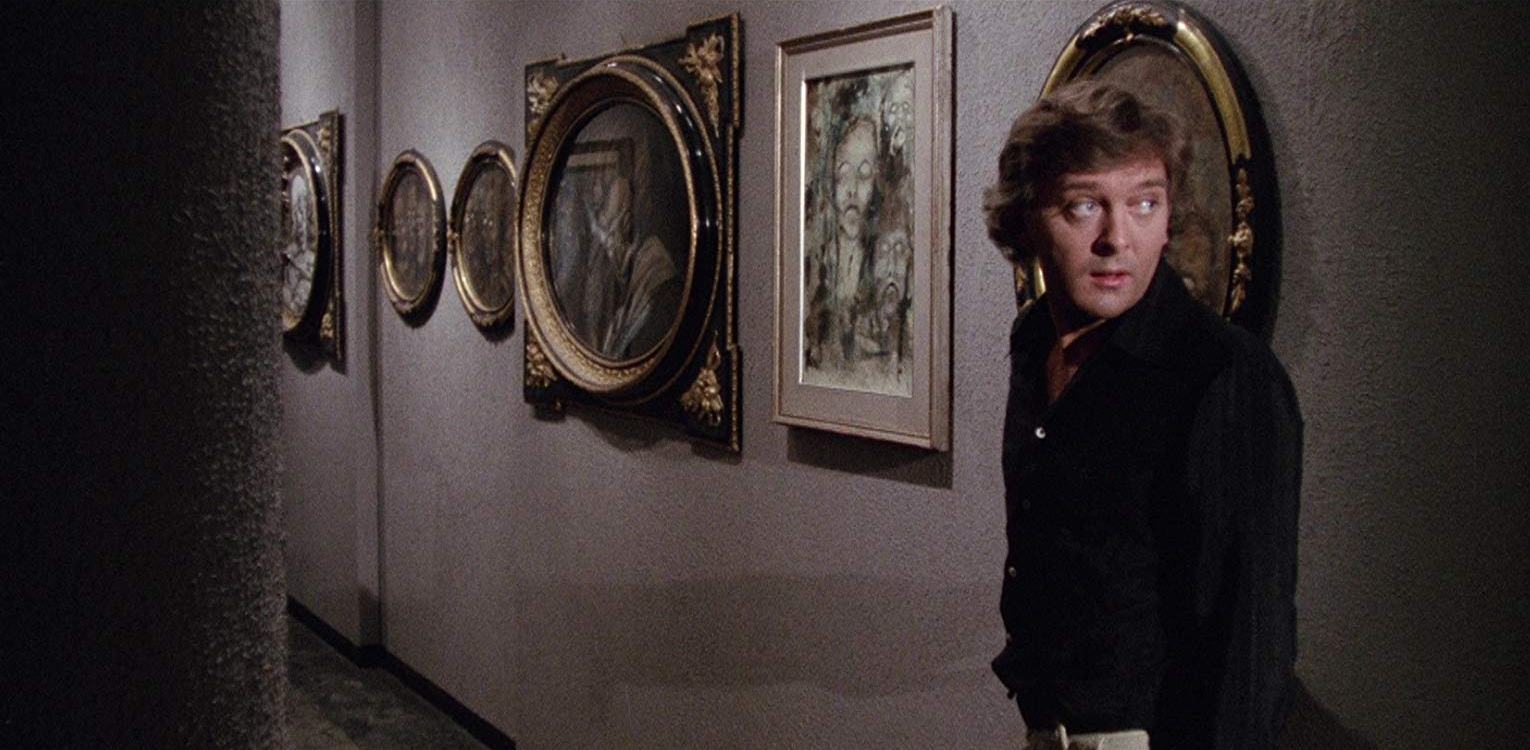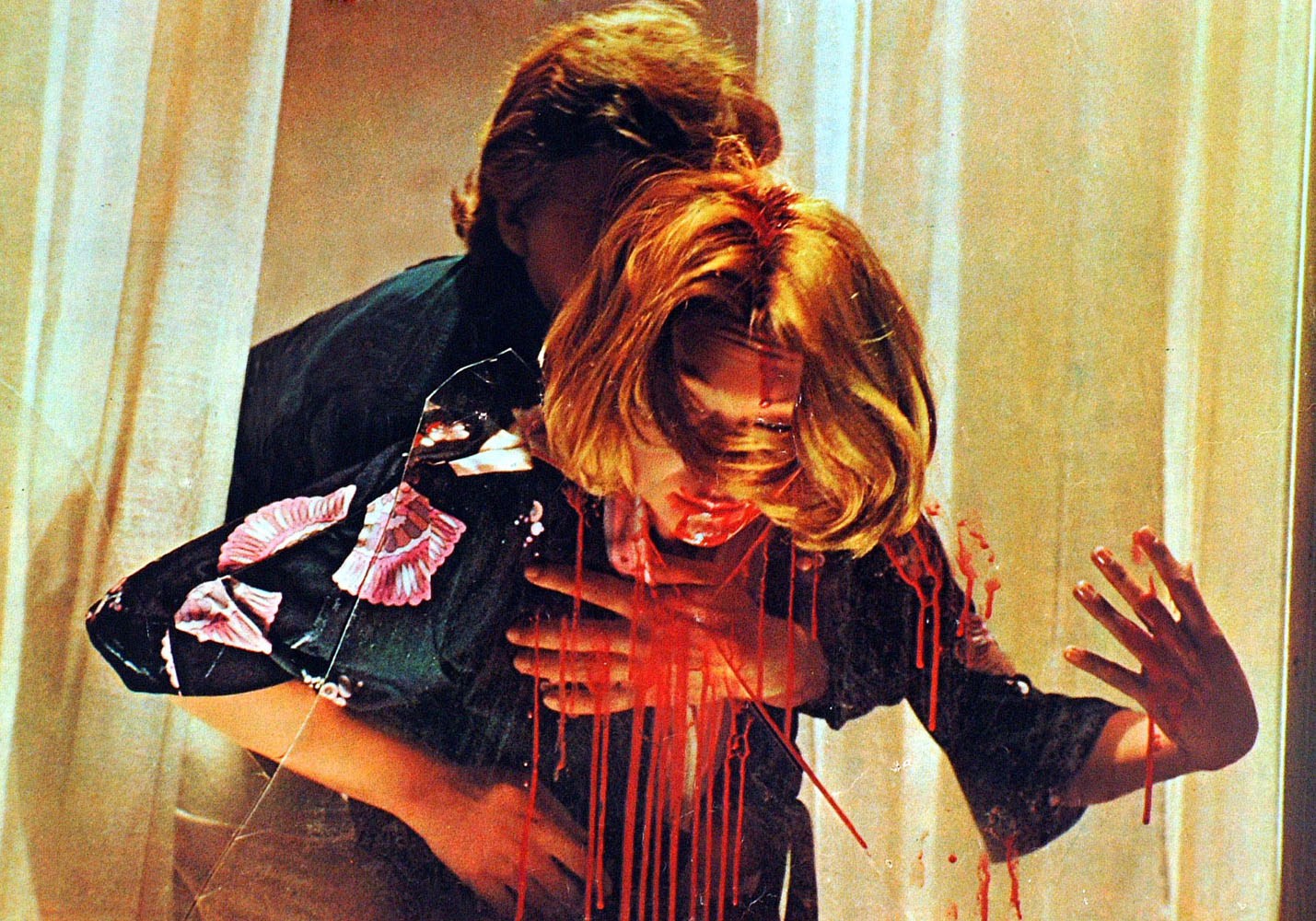aka The Hatchet Murders
(Profondo Rosso)
Italy. 1976.
Crew
Director – Dario Argento, Screenplay – Dario Argento & Bernard Zapponi, Producer – Salvatore Argento, Photography – Luigi Kuvellier, Music – Giorgio Gaslini and The Goblins, Special Effects – Germano Natali & Carlo Rambaldi, Production Design – Giuseppe Bassan. Production Company – Seda Spettacoli/Rizzolo Films.
Cast
David Hemmings (Marcus Daly), Daria Nicolodi (Gianna Brezzi), Eros Pagni (Calcabrini), Gabriele Lavia (Carlo), Clara Calamai (Carlo’s Mother), Macha Meril (Helga Ulmann), Giuliana Calandra (Amanda Righetti)
Plot
Marcus Daly, a British pianist working in Rome, is witness as his neighbour, the psychic Helga Ulmann, is murdered, with her head being smashed through a window. Afterwards, Marcus is haunted by the certainty that something was removed from the room in between the time he went there and the police arrived. As Marcus joins journalist Gianna Brezzi in trying to solve the murder, the killer starts targeting other people around him.
Deep Red is one of the early films from cult Italian director Dario Argento. Argento had found acclaim with his first film, the psycho-thriller The Bird with the Crystal Plumage (1970), and then went onto make giallo thrillers such as The Cat O’Nine Tails (1971), Four Flies on Grey Velvet (1971) and this. Straight after Deep Red, Argento had international breakthrough success with Suspiria (1977), the point from which the cult surrounding him began. Deep Red was the most acclaimed of Dario Argento’s earlier works.
Seen, Deep Red is an interesting film, although not quite the masterwork that many have called it. It rehearses many of the themes that identify a film as distinctly Dario Argento’s. There is the recurrent theme of the hero(ine) who sees an important clue in the crime yet is unable to remember it later or mistakes it for something else. (Here Argento pointedly casts David Hemmings who came to fame in fellow Italian director Michaelangelo Antonioni’s Blow Up (1966), a classic of mistaken enigmatic clues, a film that Argento acknowledges as the inspiration for Deep Red). There is also the increasing unimportance of plot to Argento, with Deep Red having been almost entirely constructed around sadistic set-pieces – the killer’s motivation when revealed seems ludicrously contrived.

The sadistic set-pieces in his films are what has gained Dario Argento a cult. The ones in Deep Red have become the stuff of legend – the psychic being killed, her neck being shoving into the glass of a broken window; Giuliana Calandra having her head smashed against a wall and then drowned under the boiling water of a bath; the pianist Glauco Mauri having his teeth bashed out against a mantel-piece and then being stabbed in the neck; one character being hooked by a garbage truck and dragged through the streets, before being run over by David Hemmings’ car as he skids to a halt; David Hemmings hooking the killer’s necklace in the gate of the elevator cage and they being decapitated when he pushes the button.
The problem here is that Dario Argento’s set-pieces sound nastier in description than they do in actuality. Argento has not yet developed the sublimely arty sadism of films like Inferno (1980) or his masterpiece Opera (1987). There are times here that his direction seems rushed. The soundtrack certainly seems crudely engineered.

There are occasional flashes of the high art approach that Argento would later develop – the camera cruising in closeup along the notes of a music score and the keys on a piano and between the toys on a floor, or the constant sense of voyeurism as the camera seems to take the point-of-view of someone creeping up on the hero sitting in the library or peeping out from behind curtains at the psychic talking in the hall in the opening scene. There is also an excellent opening set during the parapsychology conference with the psychic giving a demonstration of her abilities only to then pick up flashes from the killer in the audience.
Dario Argento’s other films are:– The Bird with the Crystal Plumage (1970), The Cat O’Nine Tails (1971), Four Flies on Grey Velvet (1971), Suspiria (1977), Inferno (1980), Tenebrae/Unsane (1982), Phenomena/Creepers (1985), Opera/Terror at the Opera (1987), Two Evil Eyes (1990), Trauma (1993), The Stendhal Syndrome (1996), The Phantom of the Opera (1998), Sleepless (2001), The Card Player (2004), Mother of Tears: The Third Mother (2007), Giallo (2009), Dracula (2012) and Black Glasses (2022). Dario Argento has also written and produced Demons (1985), Demons 2 (1986), The Church (1989) and The Sect/The Devil’s Daughter (1991). Dario Argento’s World of Horror (1985), Dario Argento: An Eye for Horror (2001) and Dario Argento Panico (2023) are documentaries about Argento.
Trailer here


